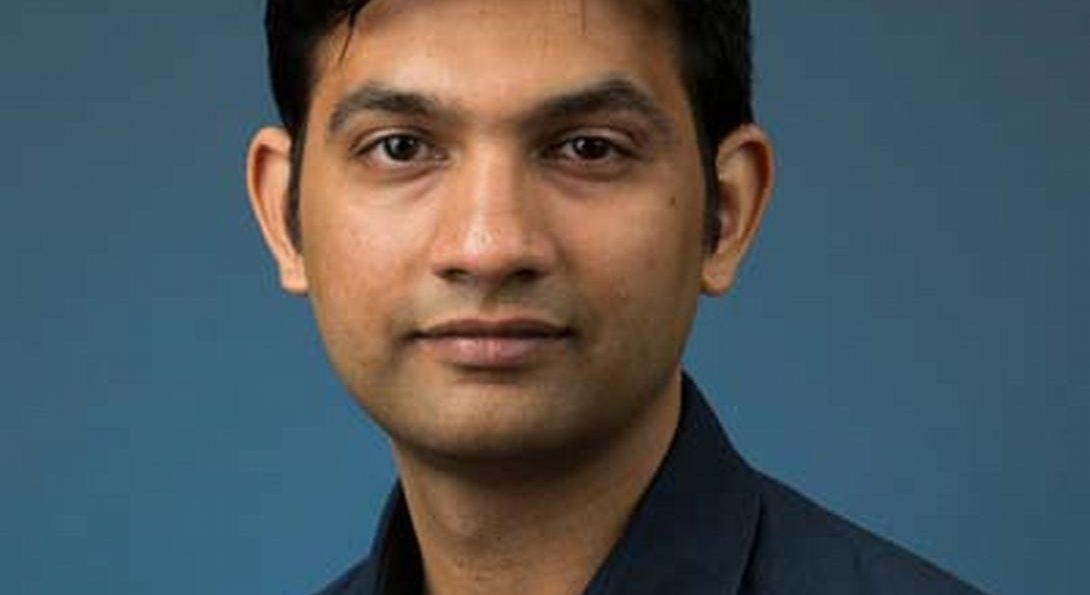Trivedi makes smart devices smarter, faster, and safer
story title Heading link

Your smart phone is not as smart as you think. But Amit Ranjan Trivedi plans to change that by making smart devices smarter and safer. He is researching and developing methods for a low power intelligence, useful for devices – like cell phones – which currently rely on far-away clouds and servers for the same.
“To achieve a low power intelligence, we are crosscutting and bridging across the stacks of technologies, circuits, and applications. We look into novel devices, which are at nanoscale – very small devices – and which offer some unique properties,” he said. “We then conceive a novel computing fabric, harnessing these unique characteristics for a physics-based implementation of machine learning and intelligence in electronics.”
Trivedi, who directs the Advanced Electronics of Nano-Devices (AEON) Lab at UIC, is looking at ways to take artificial intelligence (AI) to a new level. AI has been looked at from a primarily algorithmic or software perspective. A code is written with intelligence and this code will be ported on to a PC or another platform. Unfortunately, these codes cannot be run at lower power. They are too bulky and require considerable power dissipation. Therefore, essentially, all of the intelligence is in servers, and smart devices have to communicate with the server to get instructions.
“It has a bad bureaucracy for low power and distributed devices, because everybody has to go to this server and get the instructions from there for the intelligence, and only then they can operate on that,” Trivedi said. “So the challenge is that there is a lot of communications from small device to the big server which has intelligence. I’m coming up with ways to build intelligence in low-power devices itself.”
Speed is another challenge he is researching. Often, the distributed devices need to act very quickly to a real world event, but there is a delay as data is sent to a central location that is computing everything and telling our device what to do. Also, newer devices are coming out at a very exponential rate, and the central processor is getting over-burdened. It cannot really cater to all of the small systems very quickly.
“What we want is distributed intelligence. We want part of the intelligence put in the low-powered devices – cell phones, sensors, etc.,” Trivedi said. “So I am looking into an approach which combines the hardware and the algorithmic part and by designing both parts cohesively, it allows you to perform complex computations of intelligence at very low power. These systems can be less than a Watt; about a Milli-Watt. They can be very, very small computing chips. Right at the edge node or the sensor node you can do some intelligent computing operations. You don’t have to go all the way to the central intelligence AI server. You can do something locally that actually opens up many opportunities for new applications in real time, which can immediately sense the environment and act readily.”
Currently, an algorithm is designed without the hardware being considered. According to Trivedi, that approach lacks efficiency in terms of how fast you can operate and how low-powered it can be. He is taking a bottom-up approach and designing hardware, which is specially designed for intelligence computing.
“There are multiple angles out there, and we are looking to different technologies and different architectural schemes, which are more suited for this intelligence computing,” he said. “All of these things are coming together to make this intelligence computing much more efficient, much more lower-power, and much more cost-saving.”
The hardware he is developing for the AI, will depend on the user history. Therefore, the hardware can adapt based on the user and it will be a more personalized hardware. Along with smarter and faster devices, there is a security component to his research. Like intelligence, achieving a low-power security is also a challenge. This is especially crucial for low-power distributed devices, which are out in the open and unsecured, and in a connected world, compromising even a single device can cause much bigger damage.
“Low-power security also needs a paradigm shift of combining technologies, circuits, and applications for an integrated approach,” Trivedi said. “One direction I am looking at is bringing together AI and security, because I feel like they are not independent. A lot of aspects of AI can be applied to security to make it more robust. So the hardware we are developing for low-powered AI may also find an application in security in the future.”
The funding for this project was made possible by a grant from Semiconductor Research Consortium (SRC), which is sponsored by several industries including Intel, IBM, and Texas Instruments.